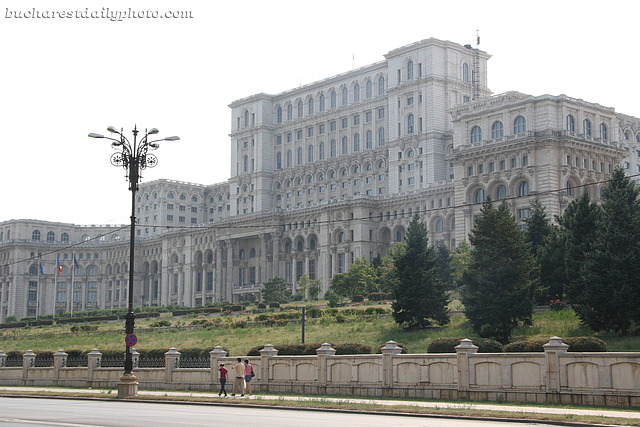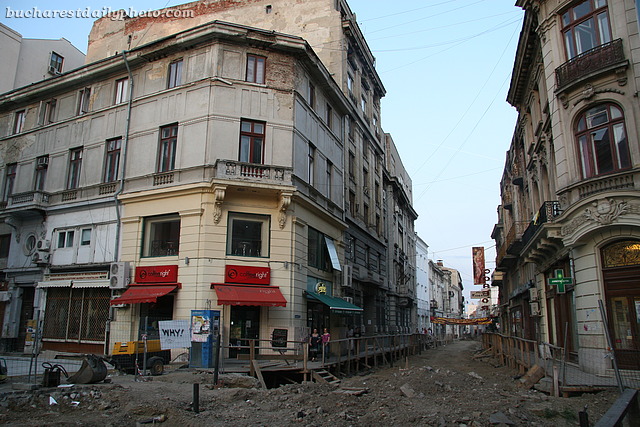This is the first time I’m taking part in Theme Day of the City Daily Photo community. Theme Day is a monthly event that happens the first day of every month, when all participating blogs will post a picture that relates to the theme day’s description. Today’s theme is Big. Click here to view thumbnails for all participants
I decided for a straighforward treatment of this theme and just photographed the biggest thing I could find in my city. I don’t know if you’ve heard but Bucharest holds the dubious record of having the biggest Parliament building in the world, which is also the second largest administrative building in the world after the Pentagon. It truly is as big as a dictator’s ego. Bucharest’s Palace of Parliament was built during the Ceauşescu’s regime and it was designed as the seat of his political power. He also intended to use the building as his personal residence. Construction began in 1984 and at the time of Ceauşescu’s death in 1989 it was not completely finished. He never got to move in.
The Palace of Parliament was and still is a controversial building. Some people think of it as shameful, an architectural horror while others are proud of its records and consider it the biggest tourist attraction in Bucharest. I tend to side with those who don’t like the building, which in my eyes represents the peak of Ceausescu’s megalomania. Many old beautiful buildings were demolished to make way for this pointlessly massive “house” (Parliament’s Palace used to be called The House of the People during the communist regime). To quote wikipedia, “much of Bucharest’s historic district, including 19 Orthodox Christian churches, six Jewish synagogues, three Protestant churches (plus eight relocated churches), and 30,000 residences” were demolished to create the space necessary for this project. I remember a joke that was going around at the time: the boulevard that ends with the Parliament Palace was to be called “The Victory of Socialism”. The joke’s punchline was that in fact the name of the boulevard is “The Victory of Socialism against Bucharest”.
Unfortunatelly I read somewhere that this building is indeed the biggest tourist attraction in Bucharest. Seems like people like records of this sort. I visited the building once, when they opened it for public in 1990; I remember some huge rooms, the dimensions being so excessive that nothing else was noticeable. Today the building houses the Romanian Parliament, as well as the National Museum of Contemporary Art (MNAC) opened in 2004 inside the west wing. It can be visited by guided tours.






